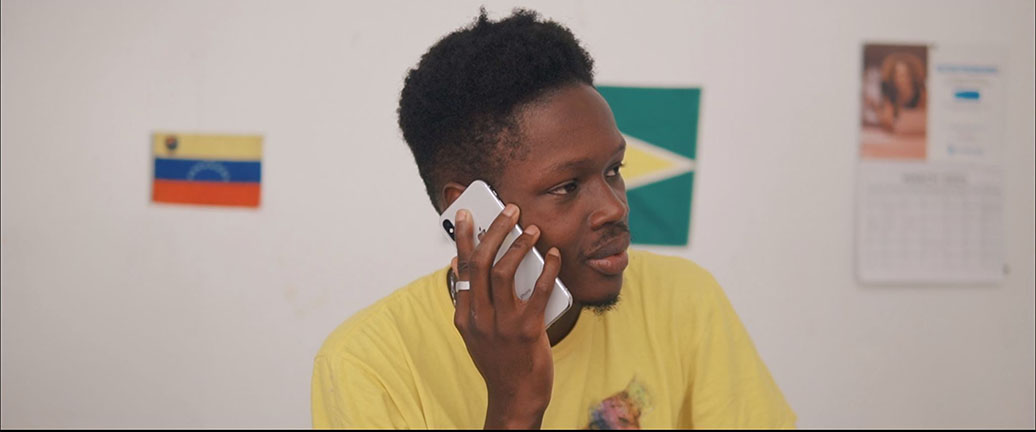It’s anyone’s guess what the film industry, local and international, will look like whenever the world comes out on the other side of the current pandemic. Cinemas are closed, and multiple festivals cancelled, postponed or trying to adapt to film going in isolation. Within the unusual circumstances, the Timehri Film Festival was unbowed by the pandemic and was held for its fifth year over the last weekend. The festival saw a collection of films, feature and full length, from the around the world, which were streamed online from June 4th to June 7th.
The most fascinating section of the festival was its collaboration with Bent Street Films for the 592 48HR Film Challenge, which asked local filmmakers to make a short film over two days as part of the festival’s competition. This was the second year that the challenge featured as part of the Timehri Film Festival – and it seemed especially timely this year as filmmakers were forced to find creative ways of completing challenges amidst the social distancing implications of the pandemic. The collection of films, eleven in all, even with their limitations offered instructive perspectives on where Guyanese artists were emotionally as well as artistically throughout the pandemic.
The preoccupation with coronavirus turned out to be the competition’s most rewarding theme. Whether it was explicit references to the virus, or storylines that depended on its existence, the presence of the virus seemed to seep into the narrative of the majority of the films here. Within that pandemic framed preoccupation, considering how filmmakers viewed the pandemic was among the high points of the challenge. Three of the films – “Manic”, “Detached” and “Anxiety” seemed to emerge from the same ilk, each of them examining the psychological effects of the pandemic. Cordell McClure’s “Manic” – tracing a young reporter’s mental breakdown, was awarded the first runner-up position by the judges at the end of the competition but as far as examining the mental effect of the pandemic, Rudolph Daly’s “Detached” seemed even more thoughtful.
“Detached” was one of the few films that featured a single character, and traced a young woman’s anxiety about going outdoors after self-isolating for months with no contact from the world outside. The film’s manifestation of the pandemic as something slightly surrealistic represented a thread throughout many of the films in the competition. In Dexter Copeland’s “Faith”, for example, a brother struck with COVID is saved by spiritual means and in Bonny Alves’ “Anxiety”, a woman’s preoccupation with the disease is represented as farce meets tragedy. On the other side of genre, Vishani Ragobeer’s “Home School,” another film with a single character, captured the bare monotony of the pandemic. Rather than the precise dread that Daly’s “Detached” captured, Ragobeer second-runner-up entry is best represented by the banality of isolation – the sequence of the protagonist sorting through snacks is amusing for the familiarity of the triteness it represents.
Martin Massiah’s “I Can’t Breathe” turned to melodrama to represent self-isolation, struggling slightly with the great scale it tries to mount in its brief running time. The film traces a man’s journey from diagnosis to recovery, which feels too much for the brief piece even as its theme – explicitly identified at the film’s end – verbalises how the mental effects of the disease have been the worst for society. Surprisingly, Massiah’s film – along with Copeland’s “Faith” – were the only two entries to explicitly sum up their themes on screen. Instead, the filmmakers seemed more interested in summoning mood and exploring atmosphere and aesthetics – a welcome inclination in many cases.
The trio of “Inside, Inside”, “Free” and “De Fuss Five Minutes” were similar in their eschewing of plot for montage. Of the three, Gavin Mendonca’s account of an early morning walk through a home garden is the most effective. Mendonca (better known for his music as Creole Rock) covers the garden excursion with a rendition of a folk song, and unsurprisingly features the best use of music of the competition. Too often, the filmmakers find themselves depending on extra-diegetic music to create atmosphere, lending itself to issues of sound that seemed more distracting than anything. The easy calm of Mendonca’s voice alongside the garden discovery ended up charming in its simplicity.
Like Mendonca’s film, Rae Wiltshire’s “The Robbery” was more focused on issues beyond COVID, tracing a fateful robbery that ended in farcical hilarity. Wiltshire’s film, attempting comedy in an otherwise drama focused competition, was an unusual entry especially for its interest in focusing on micro-issues rather than philosophical issues of life. Its final line, also made for the most ingenious use of the Guyanese proverb that each film had to use for entry.
The winning entry, both by the judges and the audience (voted for by YouTube likes) was Keon Hector & Dwayne Jordan’s “Mi Casa”, set in a mildly dystopian world five years in the future with COVID still present. Its success with audience and judges was evidence of the value of technical proficiency. Hector and Jordan’s work – bookended by a sharp drone shot at the beginning and a surprise explosion at the end – was marked by technical proficiency even in its moments of narrative limitation. The bilingual world of “Mi Casa”, also nodded to Guyana’s own developing multiculturalism in effective ways.
Creating art on a deadline is always an interesting way to assess talent, creating art on a budget during a pandemic is even more revealing. The entire slate of films remain viewable on YouTube and what recurs through the eleven short films, whether thinking of COVID or otherwise, is an awareness of the world around them.



